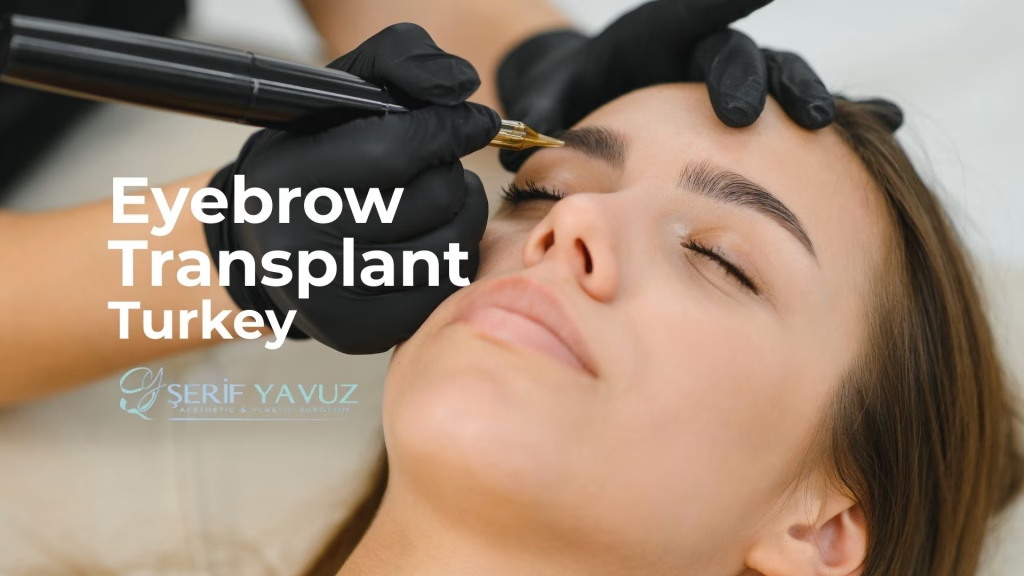
One of the most important elements that complete your appearance is your eyebrows. Eyebrow transplantation reshapes and thickens sparse, asymmetrical, or structurally weak eyebrows, enhancing your facial expression and boosting your self-confidence. A permanent solution, eyebrow transplantation is one of the increasingly popular procedures in the field of aesthetic surgery.
Contents
- What is eyebrow transplantation?
- The causes of eyebrow hair loss
- How is eyebrow transplantation performed?
- What to do before eyebrow transplantation?
- What to do after eyebrow transplantation?
- Post-eyebrow transplant recommendations
- Who are good candidates for eyebrow transplantation?
- Eyebrow transplant before and after in Turkey
- Eyebrow transplant prices in Turkey
- Frequently Asked Questions
What is eyebrow transplantation?
Eyebrow transplantation is the process of placing healthy hair follicles (grafts) taken from the back of the head individually into the eyebrow line using special needles (cannulas). The procedure is performed by creating channels at angles, directions, and densities suitable for the person’s facial features. This ensures both an aesthetic and completely natural appearance.
Eyebrows can thin, fall out, or become damaged over time due to illness, trauma, or burns. Sometimes, improper eyebrow plucking or congenital or acquired eyebrow asymmetry can compromise the aesthetic appearance of the eyebrows. Whatever the cause, it is possible to overcome these problems with eyebrow transplantation.
If you want to have eyebrow transplantation with natural and permanent results, you can contact the Plastic and Reconstructive Surgery Specialist, Op. Dr. Şerif YAVUZ, in Istanbul, Turkey.
The causes of eyebrow hair loss
The most important causes of eyebrow hair loss include genetic factors, intense stress and anxiety that damage physiology, and ageing. The causes of eyebrow hair loss can be explained as follows:
- Ageing and hormonal changes: With advancing age, the rate of tissue renewal slows down and hormone balances change, leading to thinning and sparse eyebrows. Changes in hormone levels cause hair follicles to weaken.
- Nutritional deficiencies: Essential nutrients such as vitamin A, zinc, biotin, and iron are critical for the healthy functioning of hair follicles. A deficiency in these substances prevents hair follicles from functioning properly, triggering eyebrow thinning and loss.
- Intensive chemical use: Heavy makeup, harsh cosmetic products, or chemicals can damage hair roots in the area. Regular use of these products can reduce eyebrow volume.
- Frequent eyebrow plucking: plucking eyebrows at short intervals wears down the follicles. Hair roots that cannot regenerate cause thinning.
- Skin diseases and infections: Conditions such as atopic dermatitis, seborrhoeic dermatitis, alopecia areata, and psoriasis negatively affect eyebrow follicles. Localised infections can also cause eyebrow losses.
- Thyroid disorders: In cases of underactive thyroid gland (hypothyroidism), hair loss can occur in the eyebrows as well as on the scalp.
- Stress and anxiety: Severe stress and anxiety affect the body’s overall physiology, delaying or stopping hair production. In these cases, the growth phase of the hair follicles is disrupted, and shedding increases.
- Pregnancy and childbirth: Hormonal fluctuations during pregnancy and after childbirth can cause temporary thinning of the eyebrows.
- Chemotherapy and medical treatments: Chemotherapy and some drugs used in cancer treatment affect the hair and eyebrow roots, leading to shedding. Other serious medical treatments can also disrupt hair production.
- Genetic predispositions: People who are born with thin or sparse eyebrows may have a genetic predisposition to this condition. In this case, eyebrow transplantation options can be considered to meet aesthetic expectations.
- Injuries and burns: Scars from cuts, trauma, or burns can also irreversibly damage hair follicles.
How is eyebrow transplantation performed?
Eyebrow transplantation is performed using the Sapphire FUE method under local anaesthesia. The FUE method is a reliable technique with a short recovery period, also used in hair transplantation and beard transplantation procedures. After the anaesthesia takes effect, hair follicles are harvested from the donor area at the back of the head, where healthy hair follicles are located. Eyebrow transplantation is performed by carefully placing the hair follicles into the prepared channels, taking into account the natural direction and angles of the eyebrow hairs. Eyebrow transplantation is a much more delicate procedure than hair transplantation. While the angle of the hair follicles is 45 degrees, that of the eyebrows is 10–15 degrees. The direction of eyebrow growth also differs in the inner, middle, and outer areas. For eyebrow transplantation to be successful, the procedure must be performed by a specialist doctor.
The stages and details of hair transplantation are as follows:
Stages | Explanation |
Preliminary examination | Face analysis, demand assessment, and eyebrow shaping |
Local anesthesia | Pain-free and comfortable planting |
Graft harvesting | 250–300 grafts are harvested and prepared using the FUE technique. |
Eyebrow shaping | Shaping the eyebrows at appropriate angles using sapphire-tipped cannulas |
Graft placement | Graft transplantation performed individually, with attention to symmetry and density |
Recovery and aftercare | The first 7–10 days are the scab phase, followed by 3–5 weeks of “shock loss” and 3–6 months of new eyebrow growth. |
The process takes an average of 3-4 hours.
What to do before eyebrow transplantation?
The patient’s general health is assessed prior to the eyebrow transplant operation. The patient should share with the doctor performing the procedure any known allergies, past illnesses, and medications they regularly take. Smoking and alcohol consumption should be discontinued 1-2 weeks prior to the eyebrow transplant. This contributes positively to the healing process. Furthermore, restrictions should be imposed under the doctor’s supervision regarding regularly used blood-thinning medications.
What to do after eyebrow transplantation?
- The first 24 hours after eyebrow transplantation: The eyebrow area is cleaned with a sterile gauze pad moistened with physiological saline. To reduce swelling and redness, a cold compress (not direct ice application, but an ice pack wrapped in a thin towel) is applied to the treated area for 10–15 minutes. Swelling and redness are normal and part of the healing process.
- The first week after eyebrow transplantation: Maximum attention to hygiene and care rules is required during the first week. The healthy adaptation process of the grafts depends on hygiene and the timely use of the solutions recommended by your doctor. From the third day onwards, small scabs may begin to form at the eyebrow transplantation sites. Do not pick at these scabs or irritate the area by scratching. It is normal for light scabbing to occur naturally. Avoid direct contact with water in the treated area.
- Weeks 2 to 4 after eyebrow transplantation: Shock loss begins during this period and can last for 1-2 weeks. The first hairs to emerge from the grafts fall out during this phase, which is normal. Shedding does not indicate that the new eyebrow roots are not taking; during this process, the roots are in a preparatory phase for healthy hairs to emerge. Therefore, be prepared for sudden shedding and do not panic; your new eyebrows will emerge as planned.
- Between the 3rd and 6th months after eyebrow transplantation: This is the stage when fine hairs begin to emerge from the resting eyebrow roots. The first hairs to appear may be weak and light in colour. These hairs will thicken and become denser over time. By the 6th month, the eyebrows take shape a little more each week, and their direction and structure begin to become apparent.
- Between the 6th and 12th months after eyebrow transplantation: From the 6th month onwards, the eyebrows begin to take on the desired shape. Most grafts contribute to the integrity of the eyebrows, blending in with the eyebrow line and making them fuller. The final appearance of the eyebrows emerges one year after the eyebrow transplant. Once this stage is complete, the result is a natural, full eyebrow line that complements the facial features. If there are still areas considered lacking at the end of one year, a second transplant session can be planned.
Post-eyebrow transplant recommendations
- Avoid strenuous exercise and make-up for the first 2 weeks, and do not enter hot environments such as saunas.
- After the procedure, apply a dressing twice a day starting at the time recommended by your doctor and pay attention to hygiene.
- Wear a hat to protect yourself from the sun.
Who are good candidates for eyebrow transplantation?
- Those with genetically sparse eyebrows
- Those who have experienced eyebrow loss due to trauma or burn scars
- Those who have experienced loss of fullness following aesthetic or dermatological procedures
- Those who complain of asymmetrical and uneven eyebrow shape
Eyebrow transplant before and after in Turkey
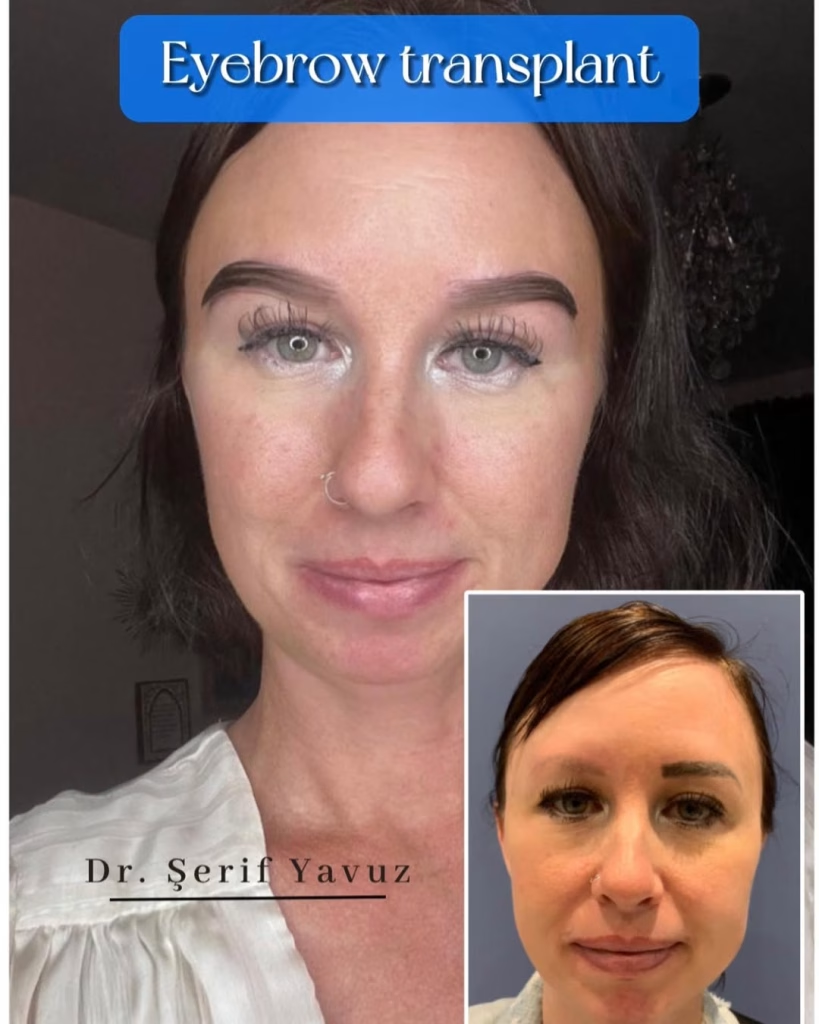
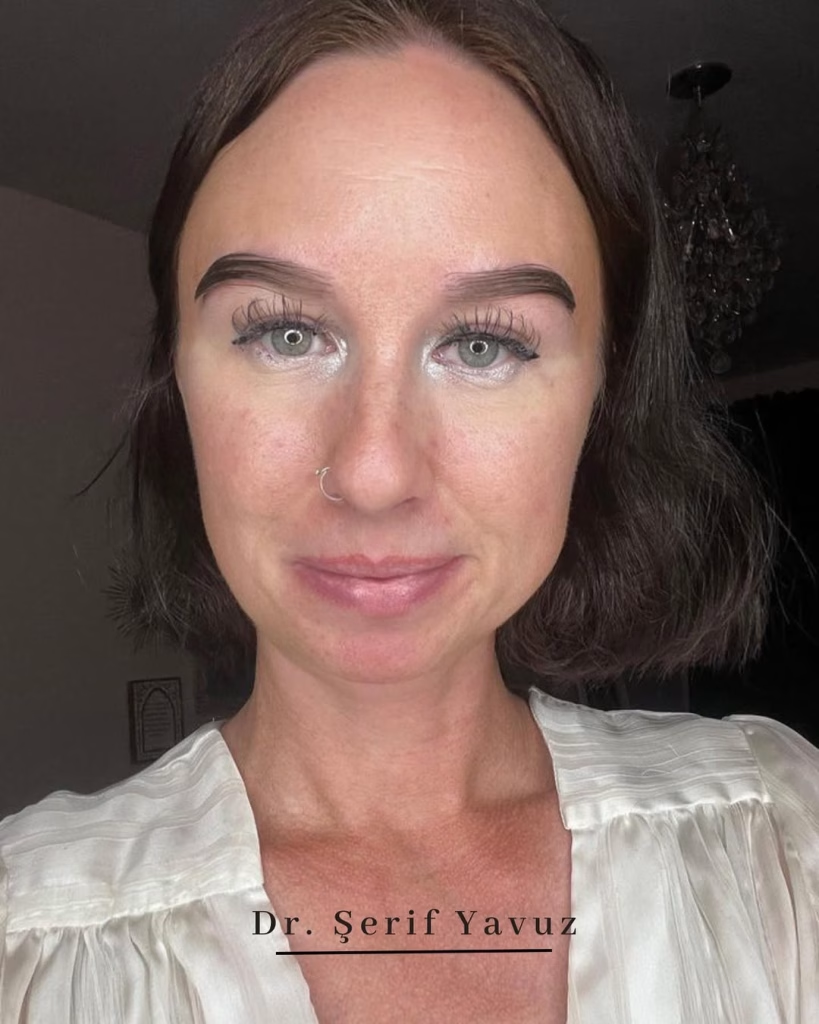
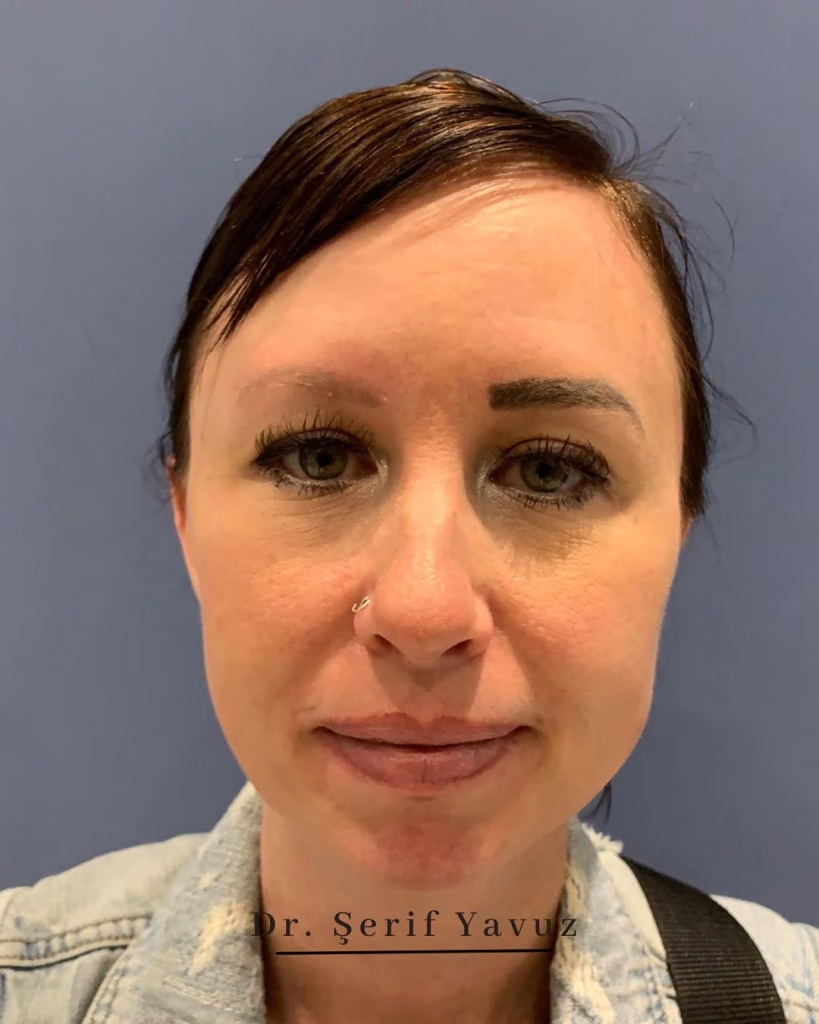
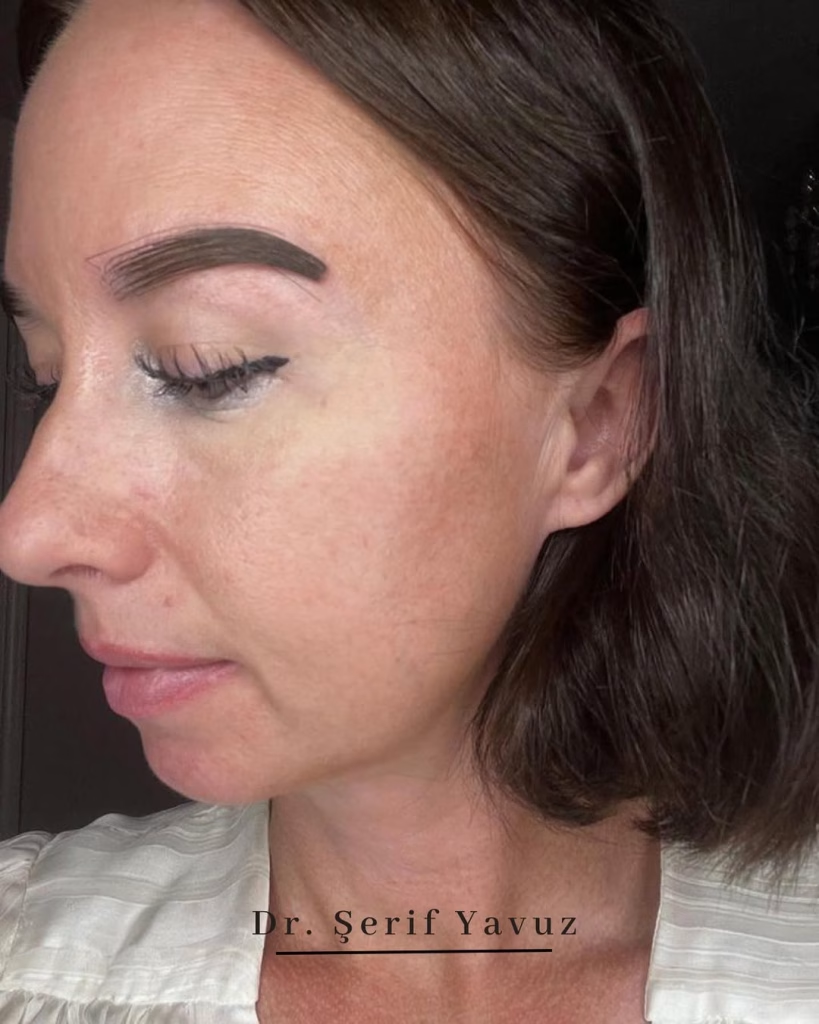
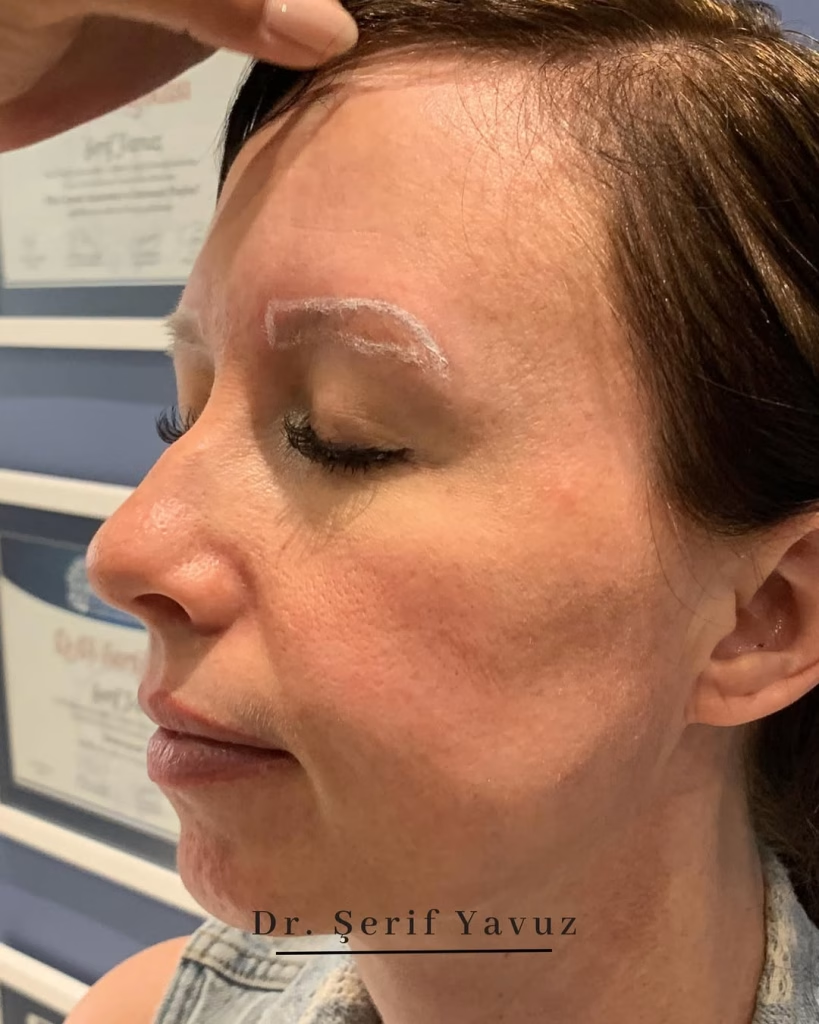
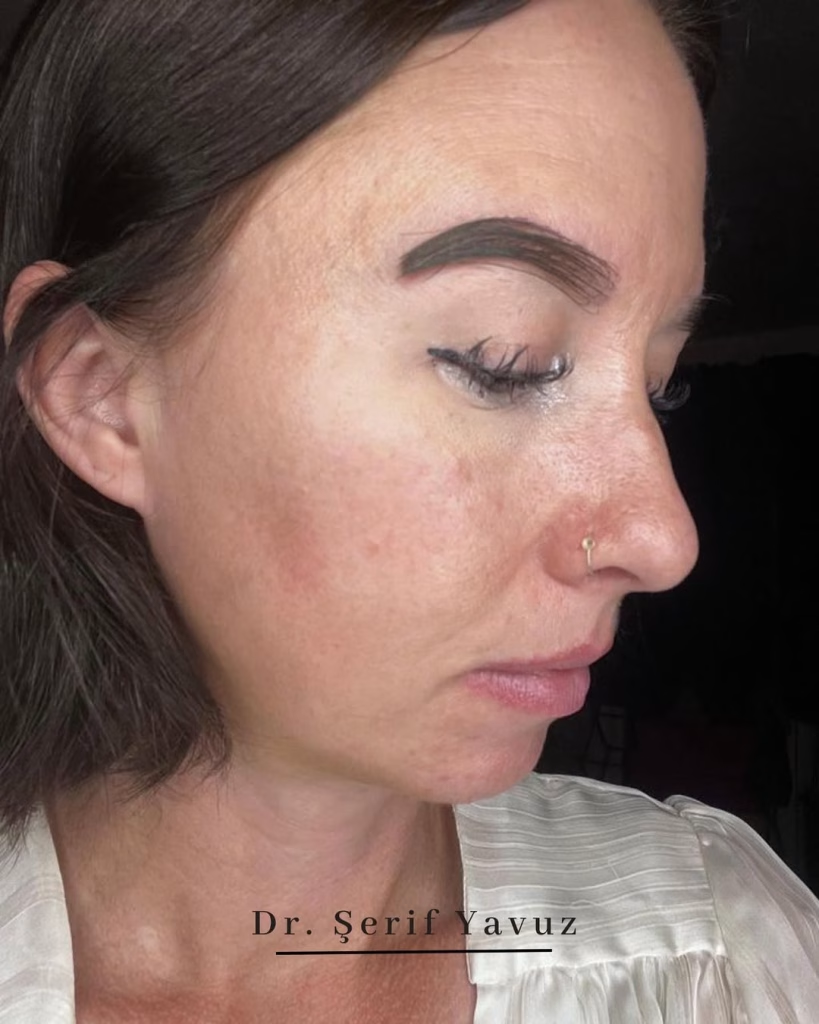
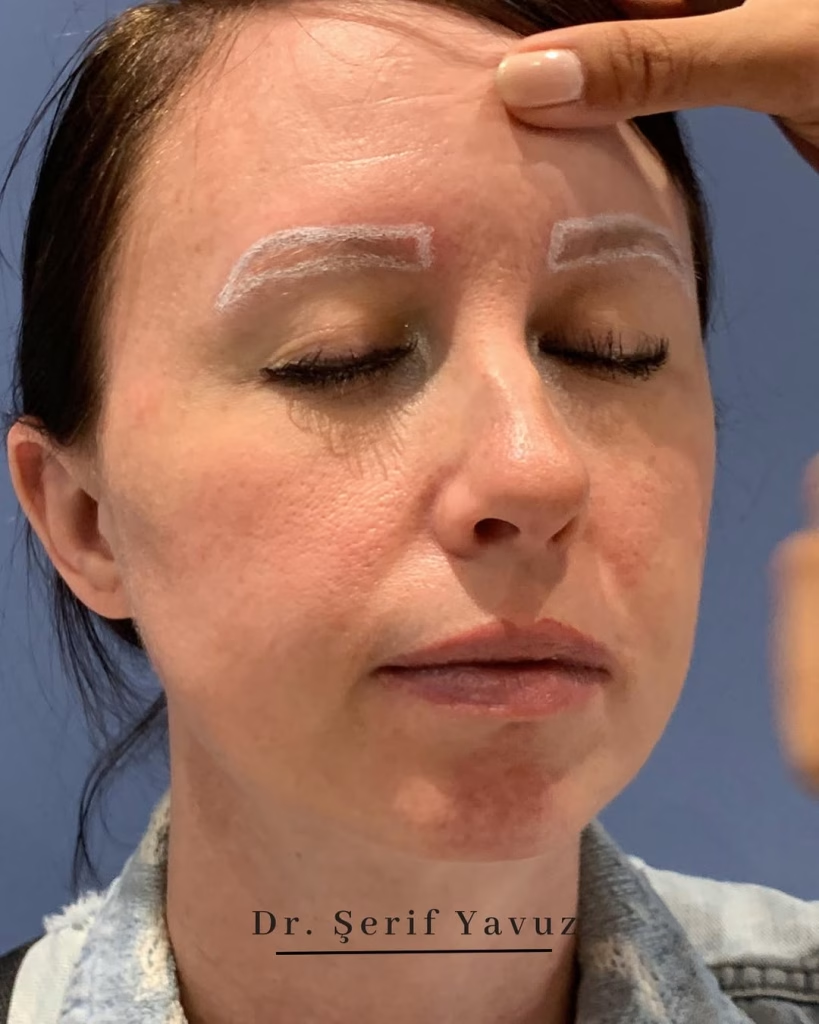
Eyebrow transplantation is a cosmetic surgical procedure that involves transplanting hair follicles from a donor area, typically from the scalp, to the eyebrows. This is done to fill in thinning or sparse eyebrows or to reshape and redefine the eyebrows. The procedure is typically performed under local anaesthesia, and it can take several hours to complete. The transplanted hairs will initially fall out after a few weeks but will regrow within a few months. Results are long-lasting and can enhance the appearance of the eyebrows, creating a more youthful and aesthetically pleasing look. Make sure a qualified and experienced surgeon performs it for you.
Op.Dr Şerif Yavuz
Eyebrow transplant prices in Turkey
Eyebrow transplant prices in Turkey are influenced by the following factors:
- The hair transplant technique used
- The number of grafts
- The clinic’s location, hygiene standards and the quality of the equipment used
- The experience and level of expertise of the doctor performing the operation
For detailed information about eyebrow transplant prices, you can consult with Aesthetic, Plastic and Reconstructive Surgery Specialist Op. Dr Şerif Yavuz, who provides services in Turkey, Istanbul. Please contact us to make an appointment.
Frequently Asked Questions
Eyebrow transplantation takes an average of 3–4 hours. You can return home the same day after the procedure.
Eyebrows that fall out due to a temporary cause may grow back on their own. In cases of hair loss caused by a medical condition, it is possible to reduce hair loss and promote regrowth with treatment. If this is not possible, eyebrow transplantation is the quick and definitive solution for eyebrow loss.
Thanks to local anaesthesia, you will not feel any pain, only a slight burning sensation where the needle is inserted.
An average of 250–300 grafts is usually sufficient for ideal fullness in eyebrow transplantation.
It is recommended to refrain from social activities for 1–2 days after eyebrow transplantation, and you can return to work on the third day.
After 3–5 weeks of shock loss and 3–6 months of new hair growth, the results of hair transplantation become visible between the 8th and 12th months.
It is difficult to mention a general age limit such as 18 years old for eyebrow transplantation. Eyebrow transplantation can be performed before the age of 18 or at an older age if necessary, provided that the patient’s general health condition is suitable.
